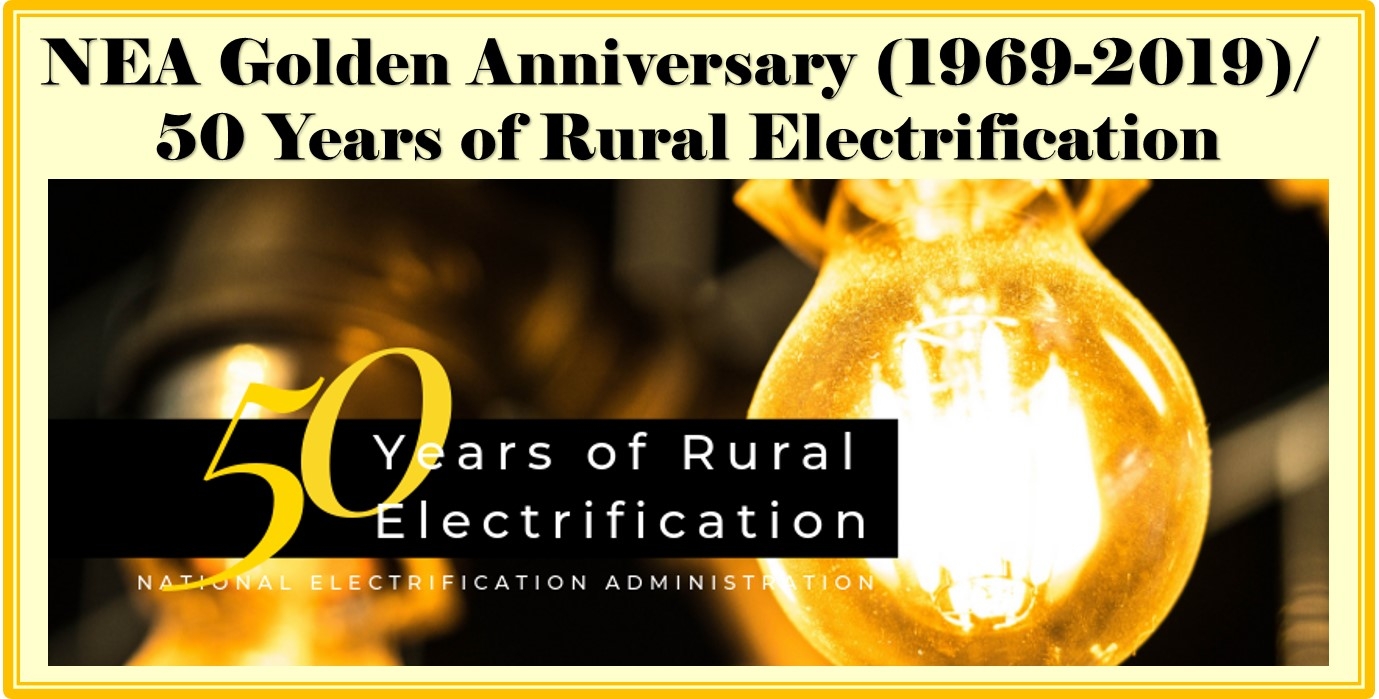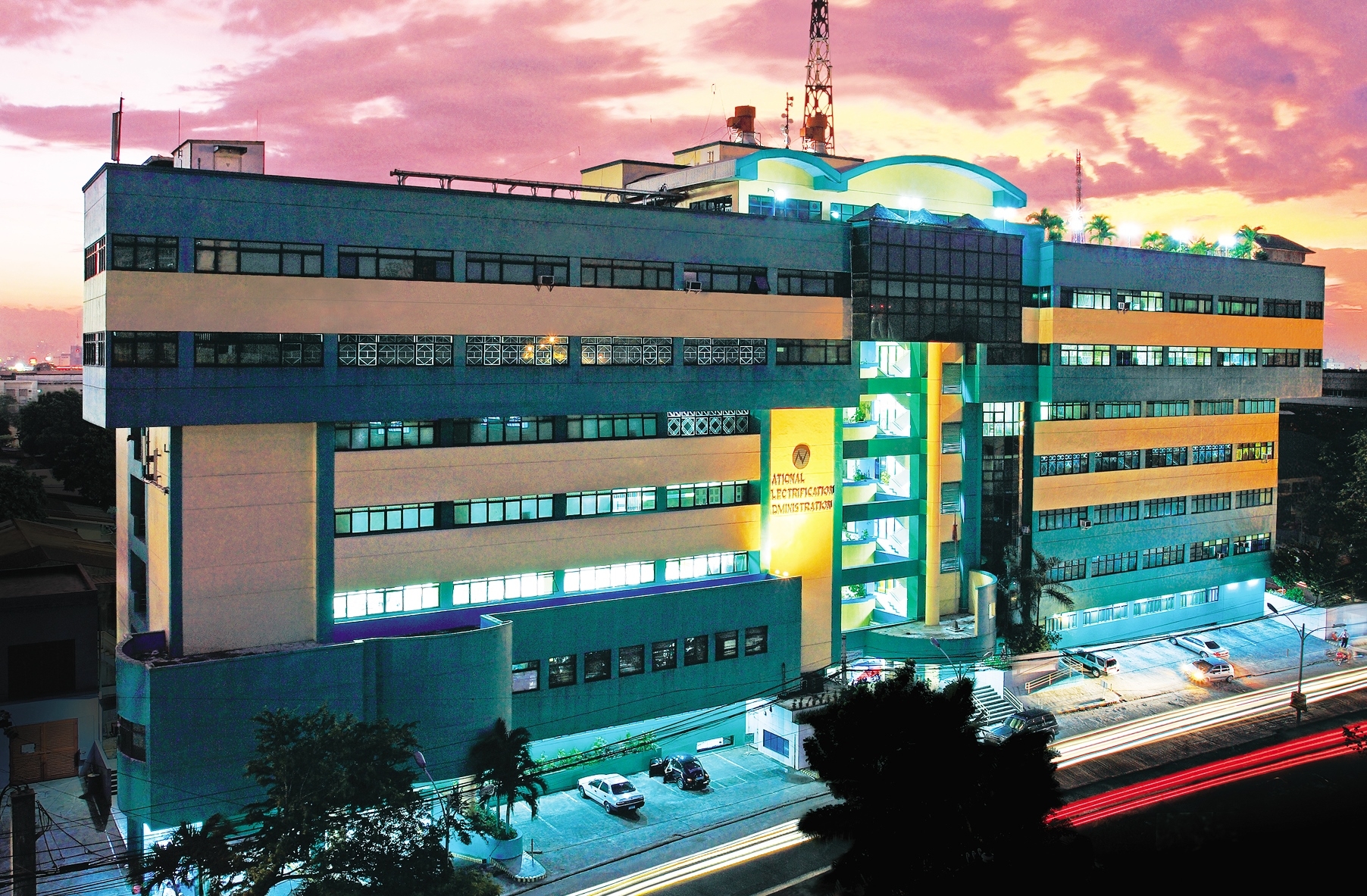
The new NEA is a revitalized corporation focused on strengthening its partners in the rural electrification program, the electric cooperatives, by ensuring that they become more efficient, reliable and globally competitive.
In line with this, the NEA Board of Administrators unanimously approved NEA’s new mandate, vision and mission statements and corporate credo on June 28, 2004. The redefined M-V-M and corporate credo puts a face to the new and reengineered NEA as a result of the EPIRA and reflect the agency’s enhanced role in the power industry. The said statements and credo were formulated to serve as guiding philosophy for NEA as its gears towards global competitiveness in partnership with the electric cooperatives.
We are a highly competent, globally competitive Filipino government-owned and controlled corporation, working with our partners, the Electric Cooperatives, committed to the ideals of the Rural Electrification Program. We take pride in remaining to be the prime mover in the rural electrification sector, by providing quality financial, institutional, and technical services to the ECs and promoting competence enhancement in a deregulated environment aiming towards a strong republic.
The Creation
Origin of the Philippine Electrification
As a nation, the Philippines with its 7,101 islands, 2,800 of which are populated, experienced its first taste of electrification in 1890. Three lamps were installed along a main thoroughfare in the City of Manila.
From1890 to the late 1960s, power generation and distribution were largely controlled by private entities. For the most part, the government was regulating electric installation. In 1936, Commonwealth Act 120 created the National Power Corporation (NPC) and tasked it with developing the country’s hydropower potential. Primarily, the Manila Electric Company (MERALCO) was the largest privately-owned electric utility which contributed to the country’s total generation capacity. Secondarily, there were small generating systems that were installed which were owned by private operators and local government units (LGUs). Due to the profit-orientation of the private utilities, electrification was limited to high-density urban areas only where electric utility operations were considered viable.
With this condition, the government realized that the rural areas were deprived from being program beneficiaries. Thus, agricultural and industrial development in the countryside was snail-paced. The government realized further that the promotion and acceleration of such development could be attained through the provision of cheap and dependable supply of power.
Beginning of Rural Electrification
Due to the inadequacy of power service, the need for an agency to oversee the installation of countryside electrical systems was felt.
It is on this score that the Electrification Administration (EA) was created. In 1960, Republic Act (RA) 2717 was enacted to carry out the country’s electrification policy. The agency was authorized P25 million to be loaned out to the electric utility operators for financing the construction and operation of generating plants, electric transmission and distribution systems for the furnishing of electric energy, particularly in the rural areas.
Despite of the agency’s creation, it was still to be many years before clean, efficient and conventional energy would reach most of the rural Philippines. The electric utility operators deemed that although extending services to the rural areas may be technically feasible; it was far from being practicable. As businessmen, they would see no profits to be made in electrifying sparsely populated countryside and even in upgrading their services. As late as the ‘60s, most of the remote areas were bereft of electricity, some of which enjoyed it only for six to eight hours and only after nightfall. This condition kept the rural economy tied entirely and exclusively to agriculture. Factories and businesses naturally preferred to locate in the cities where electric power was easily acquired.
In 1964, the United States Agency for International Development (USAID) conducted a survey of the country’s power situation. Finding that the electrification program had been moving quite slowly as private utility operators continued to ignore serving the rural areas, the study recommended the adoption of the rural electric cooperative system of the United States.
In 1966, during the state visit to the United States of then President Ferdinand E. Marcos, arrangements were made for USAID assistance in the Philippine Rural Electrification Program. A contract with the National Rural Electric Cooperative Association (NRECA) of the United States was executed. The NRECA made feasibility studies for pilot projects. Two Rural Electric Cooperatives (ECs) were set up, one in Mindanao and the other in the Visayas. These were the Misamis Oriental Rural Electric Service Cooperative, Inc. (MORESCO) and the Victorias-Manapla-Cadiz Rural Electric Service Cooperative, Inc. (VRESCO), respectively.
The first EC, MORESCO got power from the nearby Maria Cristina hydroelectric plants of NPC. VRESCO, on the other hand, had to generate its own power through generators. Both of these ECs became models of future cooperatives.

Transformation of NEA
Inspired by this developments then President Marcos issued PD 269 on August 6, 1973 which transformed NEA into a corporation wholly-owned and controlled by the government with borrowing authority and corporate powers and increased its capitalization to P1 Billion to further strengthen and enable the ECs to become effectively established and operationally viable.
The most significant among these powers were its regulatory function with regard to rate fixing and the authority to grant and revoke franchises. The latter was formerly vested in the old Congress that granted hundreds of franchises to interested groups, the essence of which stood in the way to a meaningful electrification program.
In 1974, an additional $18 million loan was granted to NEA by the USAID. At this stage, 7 ECs including VRESCO and MORESCO were able to complete their backbone systems.
In 1975, NEA received its third USAID loan worth $20 million. Also acquired was $2.3 million World Bank loan for the development of small industry projects in the energized areas and an $18 million loan from a consortium of French banks.
In 1976, a fourth USAID loan in the amount of $20 million was approved. At this period, the Philippines was clearly leading the electrification efforts among the developing countries with 63 ECs organized covering 414 towns and 3,843 barangays energized with 486,000 rural household connections.
The government’s confidence in NEA and the ECs ability to serve the intents of the program was further addressed by the issuance of PD 1645 in 1975 which broadened NEA’s lending and regulatory powers and raised its capital stock to P5 billion. NEA was empowered to invest and/or grant loans for the development of power generation industries or companies, including dendro-thermal and mini-hydro power plants and associated facilities such as alcogas and tree plantations, water-impounding reservoirs and feeder roads.
With a radical change in the form of government in 1986 under the leadership of then President Corazon C. Aquino, the Ministry of Energy was abolished and the rural electrification sector shifted gears. Line expansion, systems rehabilitation and institutional development became the priorities in this phase. During the period 1985-1989, NEA was able to organize 117 ECs servicing 2.8 million households.
By 1988, NEA embarked on a new corporate thrust from the broad “total electrification on an area coverage basis” to “to function as an interested lender in order to promote total electrification through viable ECs that provide reliable service towards countryside development”.
The last year of the Aquino administration was punctuated by power crisis. This became a national concern which was inherited by President Fidel V. Ramos when he assumed office in 1992. Under his helm, the Department of Energy was created on December 9,1992 by virtue of RA 7638. Subsequently, the Electric Power Crisis Act of 1993 or RA 7648 was also enacted on April 2,1993. Under these laws, the power sector was institutionalized and effective measures were adopted to address the electric power crisis which almost crippled the national economy at that time.
In the same year, NEA focused on the following programs:
- rehabilitation of lines
- line expansion
- energization of isolated islands
- improvement of collection efficiency
- decreasing the ECs system loss
- upgrading the ECs to higher categories
- increasing loan releases to ECs
- improving the ECs viability
Towards the end of year 2000, NEA focused on the establishment of quality services for its internal and external clients.
NEA as an organization was able to qualify as ISO 9001 certified in 2001.Based on records, it was the first GOCC to secure such kind of prestigious certification. It meant the installation of a Quality Management System (QMS) which would create a competitive advantage for the Agency in terms of achieving better results, higher efficiency and productivity at a minimal cost and of course providing the best services to its primary clientele, the 119 ECs.
New Role of NEA Under the EPIRA
It also authorized the transfer of the franchising functions of NEA to Congress, after five years from the date of the effectivity of the law and the transfer of rate functions to the Energy Regulatory Commission. However, it provided additional mandate to NEA to act as guarantor for purchases of electricity in the Wholesale Electricity Spot Market (WESM) by an electric cooperative or small distribution utility to support its credit standing. It increased the capitalization of NEA from P5 billion to P25 billion. Under the said Act, NEA maintains to provide financial, institutional and technical assistance to the ECs.
The same Act also called for the restructuring of the ECs. Hence, Executive Order (EO) No.119 was promulgated to this effect. Among others, it provided guidelines on the assumptions by the Power Sector Assets and Liabilities Management (PSALM) Corporation of rural electrification loans incurred by the ECs for the purpose of financing the rural electrification program.
One of the conditions was the submission by category A+, A and B ECs of Performance Improvement Programs (PIP). Likewise category C, D, & E ECs were also required to submit Rehabilitation and Efficiency Plan (REP). These plans were reinforced by the submission of various plans such as Global Competitiveness Plans, Accelerated Recovery Plan and Survival Plan.
Consequently, NEA had monitored closely the performance of the 119 ECs nationwide to prepare them to operate and compete under the deregulated market and to strengthen their technical and managerial capability and financial viability.
On ailing ECs, management options and special strategies were applied. One of these was the so called Task Force “Kapatid”. It is composed of engineers and linemen from neighboring ECs tasked to assist in the upgrading/rehabilitation of electricity distribution lines. This task force was utilized in Aklan, Basilan, Masbate and Lanao del Sur.
For ECs whose financial deficiencies have been well pronounced, NEA was forced to take over to sustain the delivery of reliable service to the member-consumers.
Presently, NEA as an organization is undergoing a facelift to enhance its corporate image and to improve the delivery of quality services to the ECs, notwithstanding the presence of a lean workforce.









